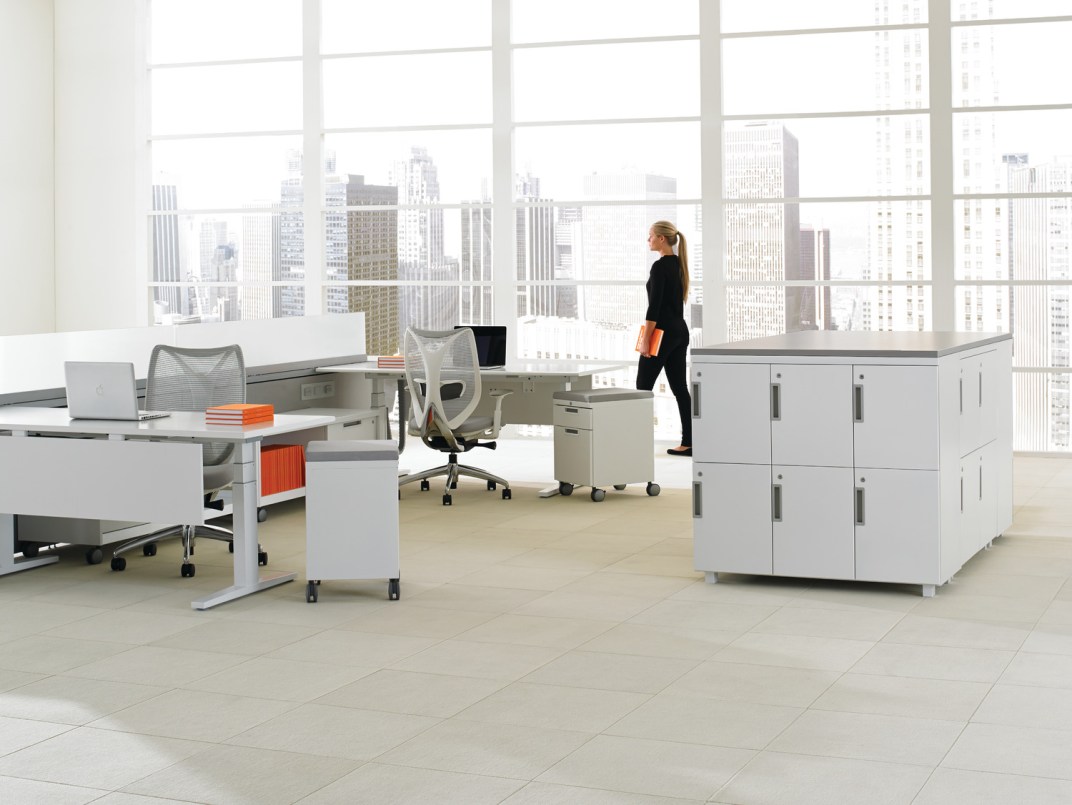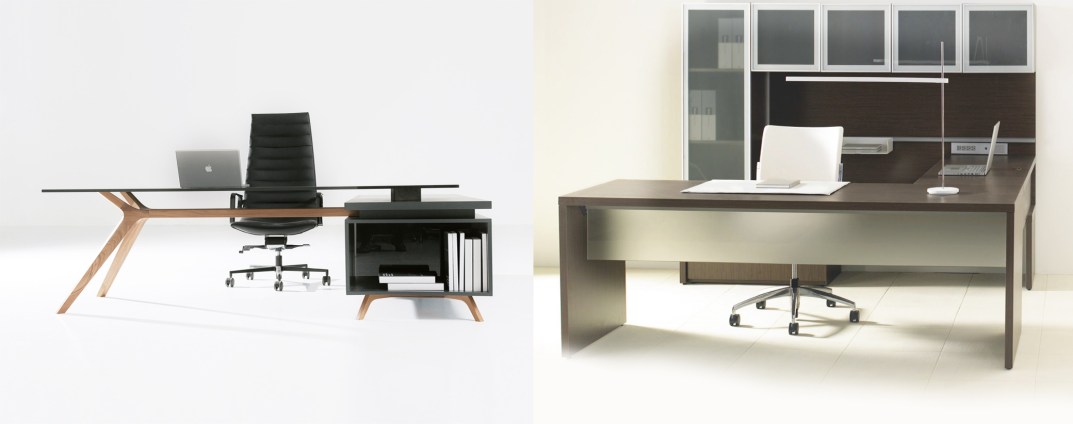Details
Melamine, Laminate, Veneer - Know the difference
13 Nov 2018Probably one of the most incorrectly interchanged words in the furniture industry - melamine, laminate & veneer. Understandably so if you consider how all three can look so deceptively similar.
When it comes to commercial furniture, the topic will most likely pop-up when having to pick work-surface tops, although it’s not restricted to just desking. We’ve broken down the three materials below so you don’t find yourself scratching your head in confusion :
Melamine
Also called direct or low-pressure laminate. It’s what you get when thin paper is applied at 300-500 psi on a substrate board. Technically speaking, melamine is the glue used to saturate the layers of paper transformed into a solid, plastic surface through thermal fusion.
In general, Melamine is cost effective due to its manufacturing process. It’s also available in a variety of colors and finishes. However, it fails when moisture or water is involved. The board it is bonded on also had voids at the end, thus necessitating an edge-banding to cover the area. Melamine is a great option if you’re looking to value engineer products that are meant to have up to a 5 year lifespan.
How do you tell the difference ?
Laminate
When sheets of paper, mostly kraft paper soaked in plastic resin is placed under 1400 psi on a substrate, the resulting product is laminate or HPL - High Pressure Laminate. It’s a more complex process involving 4 stages - soaking sheets in resin, drying, stacking them over in a decorative manner in layer and finally thermosetting.This newly formed layer of laminate is combined with a decorative film layer then attached to a wooden substrate.
While laminate can be a bit more expensive, it is more durable to moisture, chemicals,heat and impact resistance. The type of laminate is picked on a performance and intended use of the product. HPL is often divided into various product types: general purpose, vertical surface, postforming, flame retardant, high wear, cabinet liner and backers, but most fall under general purpose.
How do you tell the difference ?
Veneer
A thin layer of hardwood that is bonded to a less expensive surface below. It’s known to be the finest expression of wood in the commercial market, and is a natural product. The manufacturing process usually involves selecting the type of lumbar, then cutting or ‘peeling’ it in a particular manner. The direction and mechanism with which it is peeled gives the veneer surface it’s characteristic grain and texture. Veneer comes from trees, and trees are natural, hence the grain and texture being unique. Using veneer is ecologically and economically advantages as you get more out of a single log when cut in sheets, as opposed to solid wood.
Owing to origin and manufacturing process, it’s understable why veneer is more expensive than both melamine and laminate. The color is also specific to the type of tree, but can be stained to achieve non-natural colors. It allows designs and arrangements of the wood that are not possible with solid wood or laminates. It’s also more stable,and is not prone to warp, splitting or seasonal movement.




